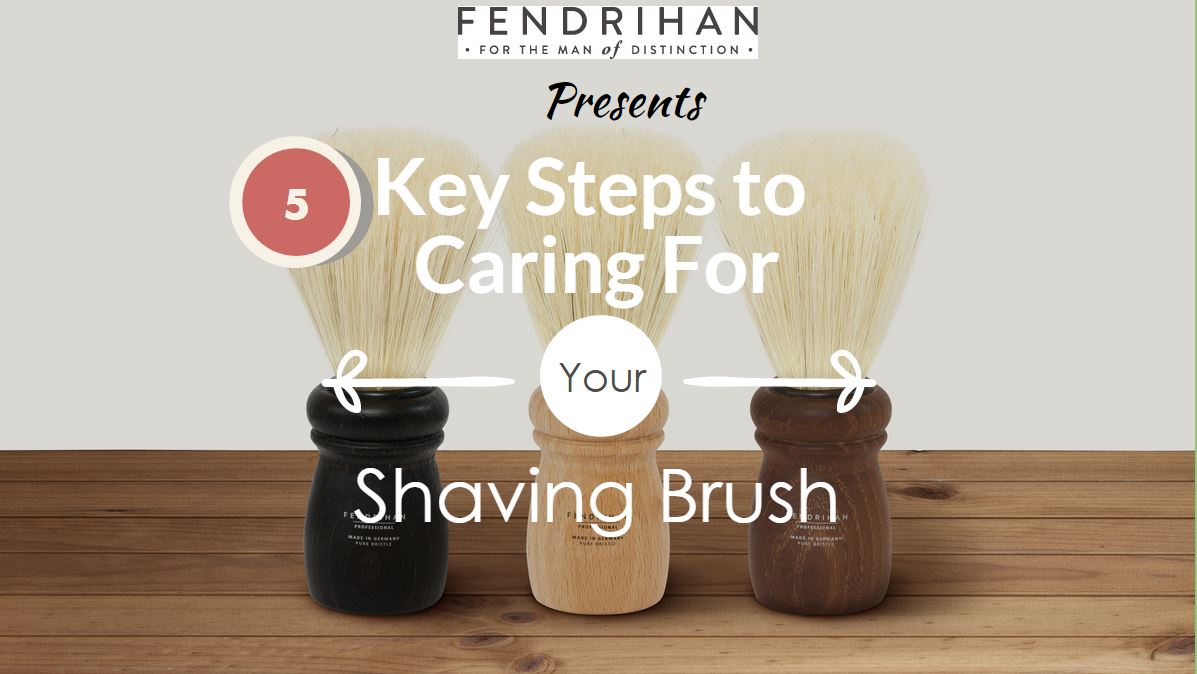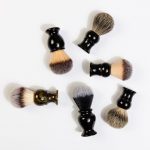For a lot of people, the shaving brush is an integral part of their shaving experience. Its ability to hold water, produce lather, and caress the face can make or break the shave. There’s a good reason why many of our customers eventually work their way up to expensive, silver tip badger brushes – there’s a difference to be had in the material of the brush and its handle.
But how do we make sure our shaving brushes are kept in top condition for the shaves ahead? We’ve already talked about how to get the best lather, but what about once you’re finished shaving? You’ve made a big investment, and with the right care your new brush should last you decades. But how do you make sure that it does? Here are a few quick tips from expert brush-maker Heinrich Thater every shaver should know (and some of them might not be what you’d expect).
1. Keep it dry
After shaving, let the brush relax in its natural state by shaking out all excess water, and then leave it in a stand upside down. This will let any remaining moisture drip out, away from the base. Make sure it’s not stored in a humid or damp room.
2. Be gentle with it
A lot of us instinctively want to mash the brush into the soap to make sure we’re loading the brush properly. But this can cause two problems with your brush: first, it’ll drive the soap down into the knot, where it’ll dry and won’t produce lather. And secondly, it can damage the brush itself, defeating the purpose.
3. Don’t face lather
This tip is kind of controversial, because many shavers find face lathering to be responsive, quick, and easy. But expert brush manufacturer Heinrich Thater says that face lathering will wear your badger tips more quickly than lathering in a mug or bowl. The reason? Your facial hair is thicker and tougher than badger hair.
4. Clean it regularly
Make sure you rinse out all remaining soap after each shave, and once a month give it a deeper cleaning with a mild detergent. Getting rid of this extra soap residue, especially any that’s been forced down into the middle or bottom of the brush, will help prevent dried-up lather – the most common source of broken and shed hairs.
5. Getting too hot
Everybody wants a piping hot shave, but your brush tips are sensitive. Using water above 40 C/ 104 F can damage the ends and cause them to curl. In many cases, using water any hotter than this can actually void the warranty on your shaving brush. So make sure the water is only warm, not hot – and for comparison, 104 F is about the temperature of a hot tub.
 With the right care and attention your brush should be a lifetime companion. It can seem daunting at first, but most of these rules will become second nature with practise, so don’t worry too much. As long as you’ve got the right brush, the right stand, and the right attitude, everything else will fall into place.
With the right care and attention your brush should be a lifetime companion. It can seem daunting at first, but most of these rules will become second nature with practise, so don’t worry too much. As long as you’ve got the right brush, the right stand, and the right attitude, everything else will fall into place.





